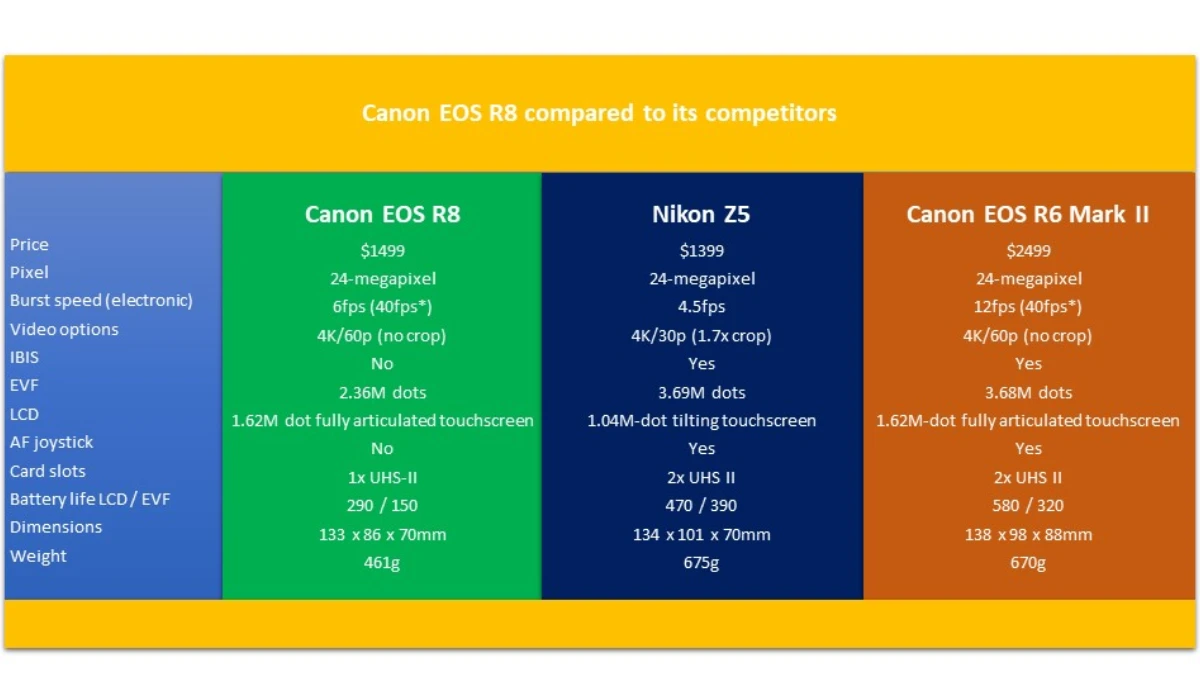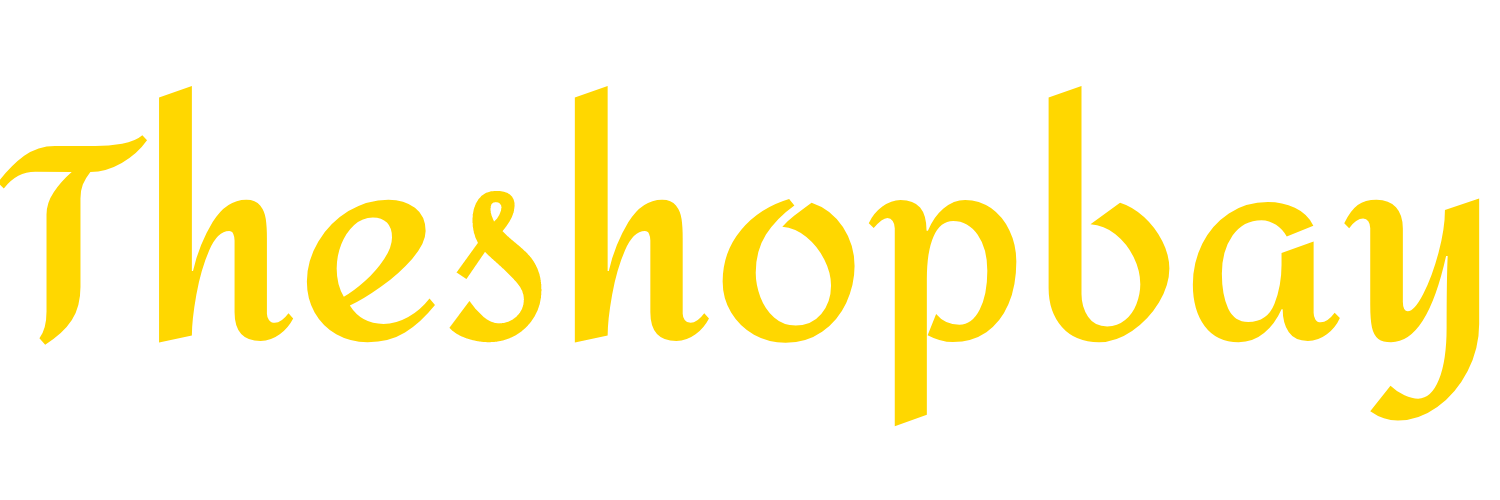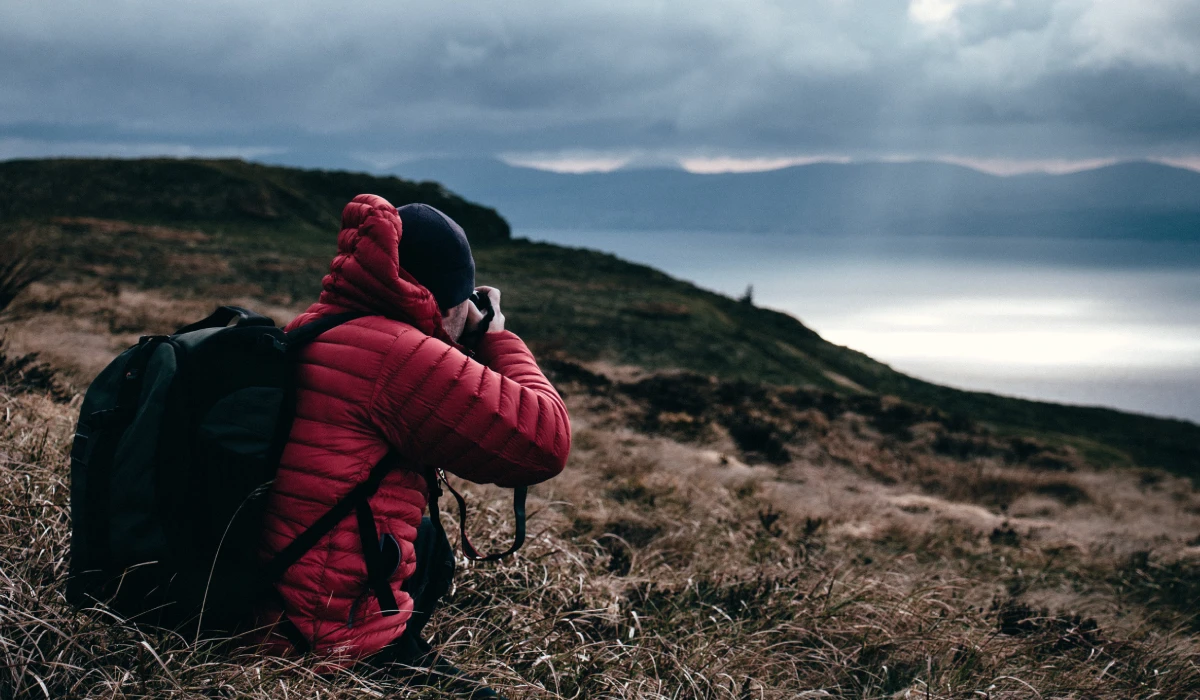Introduction
The Canon EOS R8 is an entry-level full-frame camera that comes with a 24.2-megapixel sensor. It can be considered as a replacement for Canon EOS RP or the older EOS R cameras. The sensor is the same as the Canon EOS R6 Mark II and so are the autofocusing capabilities.
Canon EOS R8 Key Specifications
- 24.2-megapixel full-frame sensor
- 6fps in first curtain electronic shutter mode
- 40fps in electronic-only shutter mode and up to 30fps in RAW burst mode with pre-buffering
- 1.62M dots fully-articulating LCD screen
- 2.36M dots EVF
- 10-bit C-Log3 mode
- Oversampled full-width 4K/60 video
- Single UHS-II card slot
- No IBIS (In-body Image Stabilization)
- ISO – 100 to 102,400
- Weight – 461g
- Dimension – 132.5 × 86.1 × 70.0mm
Canon EOS R8 – Body, Handling, and Performance
The EOS R8 essentially has the Canon EOS RP body. It is lightweight, has a good holding grip, is comfortable, and is larger than what we get with the Canon EOS R50.
The camera comes with some nice features like the twin control dial and the AF ON button. The AF joystick is however missing, which means to shift focus from one subject to another or simply selecting your focus point, there is a dependency on the touch-screen LCD.
There is a single SD card slot but it is compatible with the UHS-II speed card.
The EOS R8 is an affordable entry-level camera which also means that there are some sacrifices in the quality of the gear. The EVF you get with the camera is 2.36M dots which is not the best. The back panel LCD is 1.62M dots which is a fully articulating touch-screen.
It however has the same good 24.2-megapixel full-frame sensor as the Canon EOS R6 Mark II, which is not a back-side illuminated sensor. The readout speed is fairly quick as well.
The camera does not have a conventional mechanical shutter. It comes with an electronic first curtain and electronic-only shutter modes. The electronic shutter does not have too much of rolling shutter issues. However, to get better dynamic ranges in your photo, it is suggested to use the electronic first curtain shutter mode. The electronic first curtain is also more stable, especially useful for hand-held photography, producing better images at low shutter speeds. You will certainly miss the mechanical shutter, especially while shooting high-speed or with a bright aperture wide open where you will see a truncated bokeh while shooting with this camera.
Talking about the camera frames per second and buffer, you get 6fps with the electronic first curtain and 40fps with the electronic shutter mode. This is very similar to the Canon EOS R6 Mark II. The high-speed 40fps is very fast and useful, especially while doing action photography or sports photography where you have very little time to capture a specific moment. The high speed however might fill up your buffer fast. The camera also has a useful pre-burst RAW feature where the camera starts shooting slightly before you press the shutter button in continuous shooting mode.
Autofocus and Photography Performance of the Canon EOS R8
The autofocus of the Canon EOS R8 is its strength. It has the same autofocusing system as the EOS R6 Mark II and has a good interface. The tracking AF with subject detection is very easy to initiate and tracks where or what you want it to. It also has extra subject detection modes like the Canon EOS R6 Mark II. Animal autofocusing and face eye detection are very effective.
The problem is the missing AF joystick due to which everything must be operated using the back panel LCD touch-screen. However, the autofocusing system you get with this camera is the best at this price point.
The other feature is that you can bring the EVF right in front of your eyes and still be able to drag your fingers on the LCD to control the AF point. This is a helpful feature considering that the AF joystick is missing. Adding to that, the other autofocusing feature the camera has is that you can bring the EVF up to your eyes and tap the screen to toggle focus between different subjects. For example; if you have three people in the frame and you want to focus on one person at a time, you can do that by tapping on the LCD.
Video
The video capabilities of the EOS R8 are pretty straightforward. Since it shares the Canon EOS R6 M II sensor, most of the video features carry over as well.
The R8 has oversampled 4K/60P full width which is amazing to get at this price point. The new AF mode focuses on only the detected subject, which is another big advancement. This also minimizes the chance of the camera’s focus drifting away from the subject and focusing on the background.
You also get slow motion 1080/120P which is not really great, but a good to-have feature.
A few more nice advancements the camera has are the headphone jack, microphone jack, advanced shoe, and the C-Log 3 profile 10 Bit, giving more dynamic range.
With the Canon EOS R8, you get under 1 hour of video compared to the Canon EOS R6 Mark II which gives a couple of hours of video as it has a bigger battery. The other problem is that when you are recording at 1080/120P slow motion and when you jump out of it will go to 1080/60P which is not something most people use.
Battery Performance
Compared to the EOS R6 Mark II, the R8 uses an LPE17 battery which does not have an exceptional battery life. This is also one way of keeping the camera’s size down as a cost-cutting measure. The camera can be charged via the USB port using the Canon PD-E1 USB power adapted.
Pros and Cons
Pros
- Compact comfortable design
- Lightweight
- Video/Stills hybrid toggling switch
- Subject detection modes
- USB charging
- Headphone and microphone jack
- High image quality
- High-speed 40fps with electronic shutter mode
- C-Log three profile 10-bit oversampled 4K/60P
- Pre-buffering mode
Cons
- No IBIS (In-body Image Stabilization)
- No AF joystick
- Low-resolution camera EVF
- Short battery life
Comparison
Here is a quick comparison of the Canon EOS R8 to some of its competitors; the Nikon Z5 and the Canon EOS R6 Mark II.

Conclusion
The Canon EOS R8 is an affordable entry-level full-frame camera. The autofocus capabilities, video, and great-quality images are the best that you can get at this price point. However, the poor battery life limits the long duration of use of the camera. The camera is however good for beginners or someone who is looking for an upgrade from the Canon EOS RP or older Canon R cameras.









